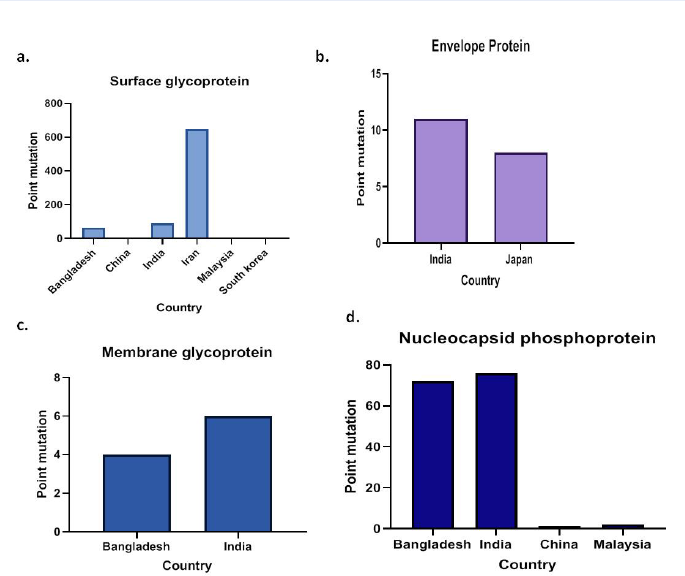Immunological and mutational analysis of SARS-CoV-2 structural proteins from Asian countries
DOI:
https://doi.org/10.15419/bmrat.v8i5.675Keywords:
allergenicity, antigenicity, COVID-19,, mutation, SARS-CoV-2, structural proteins, vaccineAbstract
Introduction: The emergence of a novel coronavirus, SARS-CoV-2, an etiologic agent of coronavirus disease (COVID-19), has led to a pandemic of global concern. Considering the huge number of morbidity and mortality worldwide, the World Health Organization declared, on 11th March 2020, the pandemic as an unprecedented public health crisis. The virus is a member of plus sense RNA viruses that can show a high rate of mutations. The ongoing multiple mutations in the structural proteins of coronavirus drive viral evolution, enabling them to evade the host immunity and rapidly acquire drug resistance. In the present study, we focused mainly on the prevalence of mutations in the four types of structural proteins- S (spike), E (envelope), M (membrane), and N (nucleocapsid)- that are required for the assembly of a complete virion particle. Further, we estimated the antigenicity and allergenicity of these structural proteins to design and develop a potentially good candidate vaccine against SARS-CoV-2.
Methods: In the present in silico study, envelope protein was found to be highly antigenic, followed by the nucleocapsid, membrane, and spike proteins of SARS-CoV-2.
Results: In this study, we detected 987 mutations from 729 sequences from Asia in October 2020, and compared them with China's first Wuhan isolate sequence as a reference. Spike protein showed the highest mutations with 807 point mutations among the four structural proteins, followed by nucleocapsid with 151 mutations, while envelope showed 19 mutations and membrane only 10 point mutations.
Conclusion: Taken together, our study revealed that variations occurring in the structural protein of SARS-CoV-2 might be altering the viral structure and function, and that the envelope protein appears to be a promising vaccine candidate to curb coronavirus infections.

Downloads
Published
Issue
Section
License
Copyright The Author(s) 2017. This article is published with open access by BioMedPress. This article is distributed under the terms of the Creative Commons Attribution License (CC-BY 4.0) which permits any use, distribution, and reproduction in any medium, provided the original author(s) and the source are credited.
